Table of Contents
Key Takeaways
- SAM-e (S-Adenosyl Methionine) is a naturally occurring amino acid crucial for brain health and bodily functions.
- It regulates neurotransmitters, impacting mood, memory, and behavior.
- SAM-e treats depression and anxiety effectively, faster than traditional antidepressants and without their side effects.
- SAM-e enhances neuroplasticity, brain-cell membrane fluidity, and muscarinic receptors, leading to improved learning, memory, and mood.
- SAM-e supplementation with B vitamins at recommended dosages of 400 to 1600 mg daily benefits conditions like depression, anxiety, osteoarthritis pain, fibromyalgia, and chronic liver disease.
SAM-e (S-Adenosyl Methionine, Ademethionine, Adomet) is the naturally-occurring amino acid methionine bound to an ATP molecule. And is found in nearly every cell in your body.
SAM-e helps produce and breakdown the neurotransmitters acetylcholine, dopamine, serotonin, norepinephrine and melatonin in your brain. SAM-e maintains cell membranes and plays a role in a healthy immune system.
Studies show that SAM-e is very effective in treating depression without the side effects of prescription antidepressants. And while pharmaceutical antidepressants can take from 6 to 8 weeks to begin working, SAM-e can work much faster.
The latest research shows that SAM-e can be anti-anxiety, reduces pain including in fibromyalgia, and can improve learning, memory and mood.
SAM-e helps:
- Neuroplasticity. SAM-e is involved in the formation of myelin that surrounds and protects axons. And SAM-e can improve brain-cell membrane fluidity. Enhancing the function of neuroreceptors.
- Neurotransmitters. SAM-e is involved in the synthesis of acetylcholine, dopamine, serotonin, and norepinephrine. Helping to normalize mood, moderate behavior, and elevate emotions.
- Neuroprotectant. SAM-e helps produce the powerful antioxidant glutathione through a process called transsulfuration. SAM-e helps stabilize cell membranes and promotes the secretion of bile. And through a process called aminopropylation, SAM-e is converted into the antioxidant methylthioadenosine, which has anti-inflammatory and analgesic (pain-relieving) properties.
What is SAM-e?
SAM-e (S-Adenosyl Methionine) is a naturally occurring coenzyme that plays many critical roles in your body.
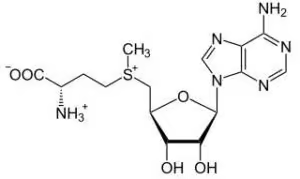
SAM-e is made from methionine and ATP (adenosine triphosphate) during a cycle that recycles the amino acid homocysteine. This cycle requires Vitamin B6 and B12 and folate (B9) to work properly.
SAM-e is a precursor to the crucial antioxidant glutathione which is used in your brain and liver. When glutathione levels drop in your body, liver damage from oxidative stress begins within seconds of exposure to alcohol or toxins.
SAM-e is a methyl donor that contributes to several essential processes in your brain. As a methyl donor, SAM-e is involved in the production and recycling of hormones, cytokines, and the neurotransmitters acetylcholine, dopamine, norepinephrine, and serotonin.
This methyl donor process is call ‘methylation’, and contributes to gene expression. Affecting how your cells work and communicate including your cell DNA.
SAM-e modifies important molecules in cell membranes that control communications within and between brain cells. SAM-e boosts the number of muscarinic receptors in certain parts of your brain which are critical to this cellular communications network.
SAM-e is used to treat depression, anxiety, osteoarthritis pain, fibromyalgia, and chronic liver disease.
SAM-e is sold as an OTC dietary supplement in the United States and Canada. And as a prescription drug in several European Union countries, and Russia. SAM-e is marketed under the brand names Adomet, Gumbaral, Samyr, Heptral, Agotan, Donamet, Isimet and Admethionine.
How does SAM-e work in the Brain?
SAM-e boosts brain health and function in several ways. But two in particular stand out.
- SAM-e helps alleviate depression. SAME-e is one of the main building blocks your brain needs to produce the neurotransmitters acetylcholine, dopamine, serotonin, norepinephrine and melatonin. By raising the levels of dopamine in your brain, SAM-e helps enhance memory, motivation and learning.
Researchers at the West Los Angeles VA Medical Center studied the antidepressant effect of oral SAM-e in a randomized, double-blind, placebo-controlled trial for 15 patients with major depression.
The researchers found that SAM-e is a safe, effective antidepressant with few side effects and a rapid onset of action. And may be useful for those who cannot tolerate prescription tricyclic antidepressants.[i]
- SAM-e directly influences neuronal signaling. SAM-e increases the number of muscarinic receptors in the hippocampus. We have two kinds of acetylcholine (ACh) receptors in our brain. 1) Nicotinic receptors and 2) Muscarinic receptors
Most of the nootropics we investigate here at Nootropics Expert influence nicotinic receptors and ACh. Muscarinic receptors have a very different mechanism of action. They are part of a large family of G-protein-coupled receptors (GPCRs) which are used as an intracellular secondary messenger system.
Your brain has a very complex system of control to regulate different processes going on in different cells at different times. For this to work, there must be a sophisticated means of communication between cells.
GPCRs and their G proteins provide this intercellular communication. And form one of the most important signaling systems in your brain. They are involved in nearly every aspect of your physiology and behavior.
G proteins work by binding neurotransmitters, hormones, growth factors, cytokines, odorants and photons at the cell surface to the GPCR, and activating that receptor. Everything you see, hear, smell, or taste goes through this signaling process.
And SAM-e increases the number of these muscarinic receptors in parts of your brain, including your hippocampus. In one study, aged rats were given SAM-e for 30 days. Supplementation with SAM-e restored the number of muscarinic receptors to levels found in the same areas in young animals.[ii]
Supplementing with SAM-e to increase muscarinic receptors in your brain can boost neuroplasticity and increase learning, memory, mood and even smell and vision.
How things go bad
You have healthy levels of SAM-e throughout your body when you’re young. But as you age, your body makes less of it. This is why young people bounce back from difficult experiences more easily. They’ve got higher levels of dopamine and a higher pain threshold than adults.
SAM-e is a major methyl donor in your body. It is involved in the biosynthesis of hormones, neurotransmitters, proteins and phospholipids.[iii]
SAM-e participates in a sequence of events involving folic acid (folate) and Vitamin B12. Folate converts to 5-MTHF (5-methyltetrahydrofolate) which converts freely circulating homocysteine back into the amino acid Methionine (using Vitamin B12). L-Methionine then binds to an Adenosine group from ATP to create SAM-e.
SAM-e is then able to donate methyl groups (called methylation) to a variety of reactions including the production and breakdown of the neurotransmitters dopamine, serotonin, norepinephrine and melatonin in your brain.
This methylation process degrades SAM-e into S-Adenosylhomocysteine. Which is then fed back into this cycle from the beginning. This process is referred to as a ‘one-carbon cycle’.
If you don’t have enough folate or Vitamin B12 available, this SAM-e methylation process breaks down. And the result can be depression, brain fog, poor recall and memory, and pain.
This lack of folate and Vitamin B12 can affect you regardless of age. This is a big enough problem that the Canadian government mandated folate fortification of all flour, and some corn and rice products to address this issue in 1998.[iv]
Low levels of SAM-e, methylfolate, Vitamin B6 and B12 can lead to all kinds of problems. And genetic defects that don’t allow the use of these important vitamins can result in the same symptoms.
↓ Cognition, memory, recall, and mood diminish
↓ Methylfolate, Vitamin B6 & B12 absorption declines
↑ Homocysteine levels rise
↑ Pain levels rise
↓ Mental health, language and fine motor skills decline
All of these changes in brain energy metabolism are contributing factors to neurodegenerative diseases, including Alzheimer’s, Parkinson’s, ALS, epilepsy, dementia, and other cognitive symptoms.
But even if you’re not concerned with genetic defects, a lack of B-Vitamins, or the effects of aging, SAM-e can help.
SAM-e benefits
Stress-related disorders like anxiety, major depression and PTSD are some of the most debilitating illnesses known to man. And if you’re reading this, and dealing with any of these, supplementing with SAM-e may help.
To cope with stress requires changes in the expression of “immediate-early genes” in your hippocampus. The same area of your brain you use for learning and memory.
Stressful events result in epigenetic (gene) modifications within ‘immediate-early genes’ in your hippocampus neurons. DNA methylation acts to suppress the expression of these genes. This is where SAM-e comes in…
SAM-e is a methyl donor for the enzyme that methylates your DNA. When SAM-e levels are high enough, a stressful event will not result in DNA de-methylation.
Instead, a stressful event enhances DNA methylation of ‘immediate-early genes’. Which suppress their expression and allows you to adapt in a healthy way to this stressful situation.[v]
SAM-e is a powerful antidepressant. In 2005, researchers combed through the databases of Medline, Psychinfo, AMED, and Cochrane Controlled Trials Register. And collated the findings of randomized, controlled trials studying SAM-e for depression through to September 2001.
The team concluded after analyzing all the clinical evidence that SAM-e was effective in treating major depression in adults.[vi]
SAM-e is also a potent pain-killer. A recent study looked at 56 people with arthritis in their knees for 16 weeks. One group took the COX-2 inhibitor Celebrex while the other group took SAM-e.
Researchers found that SAM-e was as effective as Celebrex at eliminating pain. And without the potential side effects of heart attack or stroke that can be caused by using Celebrex.[vii]
Another study on the effect of SAM-e with 17 fibromyalgia patients confirmed a close relationship between primary fibromyalgia and psychologic problems including depression.
SAM-e treatment improved the depressive state of these patients. And SAM-e was found to be an effective and safe therapy in the management of fibromyalgia.[viii]
How does SAM-e feel?
For some, supplementing with SAM-e can be life-changing.
SAM-e can have a profound effect on emotions, depression, and feelings of anxiety. You may experience improved concentration, energy, alertness, and feelings of well-being. Even vision can become clearer.
Once you start supplementing with SAM-e, you should experience at the very least, a general sense of well-being.
SAM-e works particularly well for those who deal with depression or anxiety. Neurohackers report that they no longer have panic attacks. And the feeling of doom is gone.
Adding SAM-e to your nootropic stack can improve sociability, and not feeling overwhelmed by life. Brain fog lifts and thinking is clearer and faster.
Others say that the “dark cloud has lifted”, and all the negativity and stress is gone. Things that normally would irritate are just brushed off, and you move on.
One big word of caution: SAM-e needs Vitamins B6 & B12 and folate to work. Or supplementing with SAM-e may be a waste of time and money because without adequate levels of these B-Vitamins it will not provide any benefit.
You’ll notice reference to B-Vitamins several times in this article on SAM-e. It is that important. Use Vitamin B6 & B12 and folate every day that you supplement with SAM-e. Or use a B-Complex formula that contains methylfolate (B9) (avoid folic acid).
SAM-e Clinical Research
SAM-e Lifts Mood
We have made significant progress in the last 100 years in diagnosing and treating depression. And yet, 10’s of millions still suffer from depression. In 2014, an estimated 15.7 million adults in the United States had at least one major depressive episode in the past year.[ix]
In the United States, one in ten Americans are using antidepressants.[x] I don’t have statistics from other countries but I suspect many have similar problems. Unfortunately, antidepressants only work 30 – 50% of the time. And often come with a host of side effects.
One reason that many people continue to suffer from depression is that most doctors are not aware of the link between homocysteine and depression.
If you’re dealing with depression and have had little success with antidepressants, you may have something as simple (and as serious) as a folate deficiency. Or low levels of Vitamin B12. Studies show a link between folate deficiency and impaired metabolism of serotonin, dopamine, and norepinephrine.
One study looked at 46 patients with severe depression. 24 of these patients had raised levels of homocysteine. And significantly lower levels of folate, SAM-e, and other metabolites.
The researchers concluded that looking at total homocysteine levels could be a measure of depression. When it is caused by a folate deficiency, impaired methylation (SAM-e), and poor neurotransmitter metabolism (SAM-e). And a potential benefit to simply using vitamin replacement to treat severe depression.[xi]
Or supplementing with SAM-e to treat depressive symptoms.
SAM-e for ADHD in Adults
Ritalin and Adderall are thought to be the most effective treatment in children and adults with ADHD. These stimulants work by potentiating both dopamine and norepinephrine at the synaptic cleft. But stimulant meds for ADHD come with side effects.
SAM-e acts as a methyl donor and is involved in many metabolic pathways. It has both adrenergic and dopamine receptor agonist activity.
A research team at the University of California used SAM-e with subjects diagnosed with Adult ADHD in a 9-week double-blind, placebo-controlled trial.
The research team found that 75% of the patients had a significant improvement in ADHD symptoms while using SAM-e. And the 25% who did not respond to SAM-e, did not respond to Ritalin either.[xii]
SAM-e Treats Depression
Scientists at the US Department of Health and Human Services conducted an analysis of 102 individual studies in 25 databases on SAM-e and depression in 2002. The report distilled data gleaned from published studies conducted around the world up to 2002.
This comprehensive report is called, “S-Adenosyl-L-Methionine for Treatment of Depression, Osteoarthritis, and Liver Disease.” The researchers found that SAM-e is just as effective as standard antidepressant drugs at treating depression.
The agency concluded, “Treatment with SAM-e was equivalent to standard therapy for depression”.[xiii]
SAM-e Recommended Dosage
Recommended dosage of SAM-e for nootropic benefit is 400 mg per day.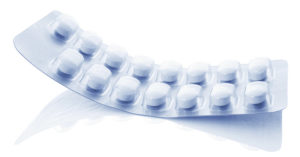
SAM-e for depression: 400 – 1600 mg daily in divided doses
SAM-e for bone and joint health: 200 – 1200 mg daily in divided doses
SAM-e for liver function issues: 1600 mg daily in divided doses
SAM-e for alcoholic liver disease: 600 – 1200 mg daily in divided doses
Some research and many user reports suggest that once positive effects are achieved, SAM-e doses can be reduced. Some report benefit with as little as 100 mg of SAM-e daily.
Studies show that SAM-e should be consumed with B-Vitamins. When SAM-e donates its methyl group, it breaks down into homocysteine. Elevated homocysteine levels are associated with increased heart disease, birth defects and depression.
Choose a bioactive B-Complex to use with SAM-e. Like the high quality B-Complex like Performance Lab® B-Complex which contains therapeutic amounts of each of the B-Vitamins you need while using SAM-e.
In order to prevent homocysteine accumulating, logic tells us based on its mechanism of action that sufficient levels of B-Vitamins must be present to convert homocysteine into the potent antioxidant glutathione.
Take SAM-e on an empty stomach and an hour before eating any food. SAM-e is best digested in your intestines and not your stomach. Not letting SAM-e settle into your digestive tract could cause stomach upset.
SAM-e Side Effects
SAM-e is produced naturally in your body. So is considered well-tolerated and safe.
If you have bipolar disorder, you could develop mania when supplementing with SAM-e. So check with your doctor before using SAM-e.
If you’re on antidepressant medication, you should check with your doctor before supplementing with SAM-e.
High doses of SAM-e can cause gas, upset stomach, diarrhea, constipation, dry mouth, headache, dizziness, anxiety or skin rashes. SAM-e may also trigger an allergic reaction in some people.
Type of SAM-e to buy
SAM-e is available in 200 and 400 mg tablets.
For optimal effects with SAM-e, stable, enteric-coated tablets are recommended. SAM-e should be taken on an empty stomach, either one hour before or two hours after meals.
SAM-e is highly unstable so check expiration dates. And you should get tablets that are packed in sealed, gel-packs for freshness.
Avoid SAM-e in powder form as you’ll likely be unsatisfied with the results.
Nootropics Expert Recommendation
SAM-e 400 mg per day
 I recommend using SAM-e as a nootropic supplement.
I recommend using SAM-e as a nootropic supplement.
Your body does make some SAM-e on its own. But SAM-e levels decrease as we age. And you cannot get SAM-e from food.
SAM-e is critical for the methylation process needed for making important neurotransmitters including acetylcholine, dopamine, serotonin, norepinephrine and melatonin.
SAM-e is also involved in the cycle which produces the critical antioxidant glutathione. And it’s involved in maintaining brain cell membrane integrity and fluidity.
SAM-e increases muscarinic receptors in your hippocampus which boosts the activity of acetylcholine and other critical neurotransmitters in your brain. Leading to improved learning, memory and mood.
SAM-e is especially helpful if you’re dealing with depression. Or having difficulty coping with any kind of stress.
We suggest a dose of 400 mg daily. It may take a while for SAM-e to build up in your system. So be patient. Once you’re achieving the affects you want from SAM-e, you can eventually try scaling back your dose to 100 or 200 mg.
SAM-e needs Vitamins B6 & B12 and folate to work. Or SAM-e may not provide the benefit you are looking for. Most integrative medicine doctors and naturopaths recommend stacking a high quality B-Complex when using SAM-e. So make sure you stack SAM-e with the B-Vitamins listed above, or a good Vitamin B Complex formula that uses methylfolate (NOT folic acid).
A high quality B-Complex containing these bioactive B-Vitamins like the Performance Lab® B-Complex .






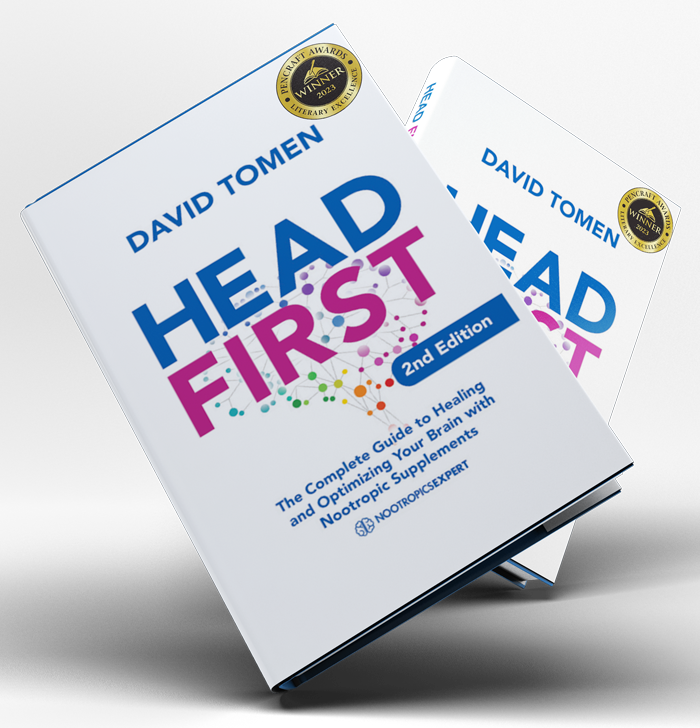
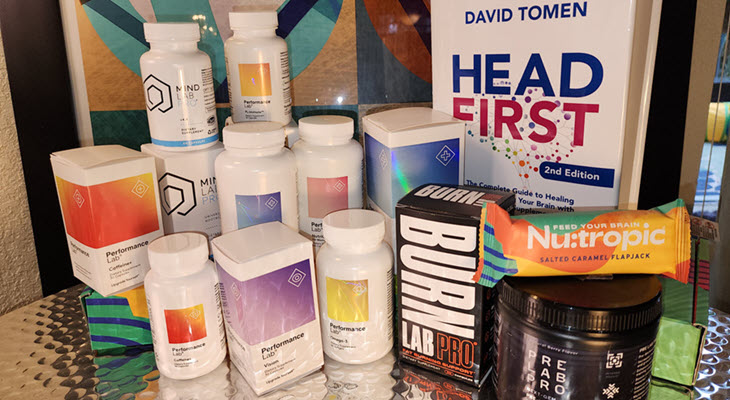
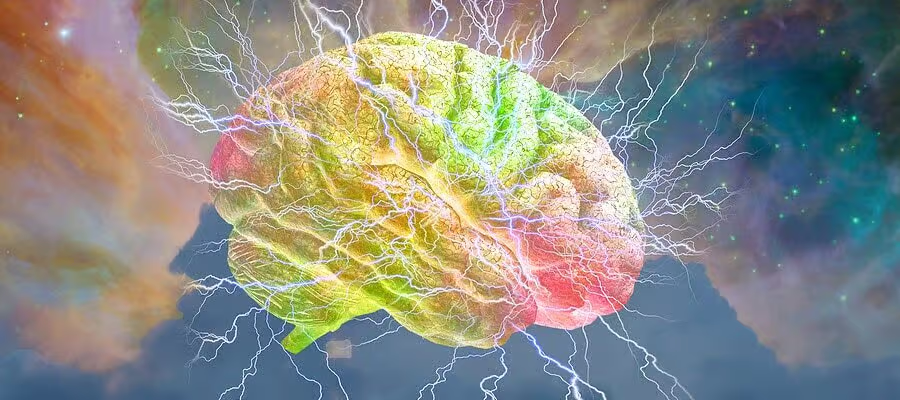
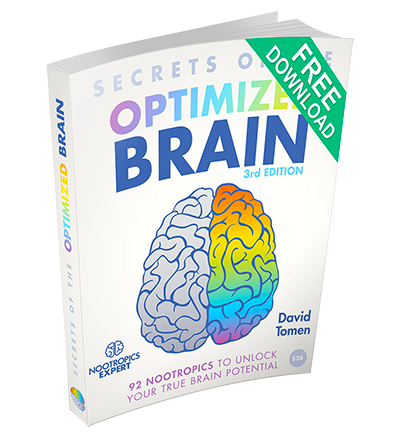
Join The Discussion - 404 comments
jessie
September 8, 2020
Hi David, im already taking SAMe. It has been wonderful for my moods and mind. I am wondering how you stop SAMe? I’m assuming you cannot cut the tablets being eccentric coated. Do you taper like a antidepressant or do you to cold Turkey? Can SAMe cause withdrawal syndrome? Or any type of depression once your body is use to it?
Thankyou
David Tomen
September 8, 2020
Jessie, SAM-e is naturally produced in your body. So quitting supplemental SAM-e should not cause any issues.
Rifat Al-chadirji
September 3, 2020
Hi David,
I have been benefiting from so many nootropics thanks to you! I want to add SAM-e to my stack. I have a wonderful B-complex from a Canadian company called AOR. It has very nice bioavailable forms of B vitamins but Folic acid instead of Folate. The folic acid is 1000 mcg in this complex, if I add a methylfolate supplement with 400 mcg, would that be too much folic acid and folate for me to enjoy SAM-e benefits?
Thank you,
Rifat
David Tomen
September 3, 2020
Rifat, it would. The problem is folic acid is the synthetic form of Vitamin B9. And it’s in every kind of processed food you can think of too. Folic acid takes over folate receptors so the folate that your body recognizes gets ignored. And you don’t get the benefits that real folate has to offer.
Russell Baker
June 22, 2020
Hi David
I too use stimulants, but it’s complex. I have tardive dystonia and had akathisia (for 7 years) and anhedonia.
worked very well but after a lot of stress went backwards
Also am MTHFR A1298C so my Folate levels are always low and have started supplementing with that (800mg). (as well as some B12, as that always need some of that (both methyl forms).
But because of the stress I did a catecholamines test and my adrenaline is through the roof. But Domaine and noradrenaline were fine. My HVA is fine but my VMA is low. So I bout some Lithium rotate and is does help somewhat with the jitteriness and agitation I feel, which can set of the dystonia). (to help with COMT)
SAMe is confusing as it seem to transfer noradrenaline to adrenaline but also break down the catecholamines.
Do you think this is a good suppliemt to add to the stack?
Thanks
Russ
David Tomen
June 23, 2020
Russ, it’s complicated but SAM-e may work and worth a try.
Another way to get epinephrine (adrenaline) under control is with natural beta-blockers which prevent epinephrine from attaching to receptors. I touched on that in my social anxiety post under the section, “Natural Alternatives to Beta-Blockers” here: https://nootropicsexpert.com/best-nootropics-for-social-anxiety/#natural-alternatives-to-beta-blockers
But there are others which used in combo have clinical evidence that they work. Check out the section “Natural Compounds” in this study: https://www.ncbi.nlm.nih.gov/pmc/articles/PMC3989080/
Charlotte
June 15, 2020
I know that some people that take ADs are worried about taking SAMe because of the risk of serotonin syndrome.
So was I – many years ago. I wrote to a professor who, if I remember correctly, pioneered the use of SAMe. Asked him about the risk of serotonin syndrome.
He said it was safe.
Of course, I can’t guarantee anybody else anything. But I’ve been taking SAMe (only 400 mgs a day so far) with the maximum dose of citalopram, namely 60 mgs, and haven’t had any problems.
It’s been a really good addition for me.
David Tomen
June 17, 2020
Thank you for sharing your story on this Charlotte. It may help some people.
Albert
June 3, 2020
Hi David,
Can you take SAMe with Bupropion? I am willing to get off from it and thought adding natural alternative like SAM-e.
Thanks for answer in advance.
David Tomen
June 3, 2020
Albert, I’m not aware of any contraindication. It may support it’s use because SAM-e is a cofactor in the production of dopamine and norepinephrine.
Jaba
May 31, 2020
Dear David, Very useful and nice website thanks a lot for this.
I live in Europe and here SAMe isn’t very popular and actually many doctors don’t even know about it and they have never tried it.
Recently my GP gave me as a trial SAMe 800 mg twice per day and to increase up to 1600 mg in 2 weeks and since I started it in first week I didn’t have any side effects with 800 mg. (I am still on 800 mg) after 3 days I added also very good Vitamin Complex which includes strong dosage of Vitamin B’s but I started to suffer from sever headache since last 3 days. Can it be related to SAMe? Or SAMe mixing with Vitamins? As a medication I take Vortioxetine very low 5 mg dosage for general anxiety but my anxiety is under control only headaches are really, really strong especially at forehead like a pressure but when I measure tension all is good. What helps me a bit is Tramadol but it’s quite strong and I don’t wanna take it on everyday basis.
Sorry to disturb you here about my problem but as you have good knowledge about SAMe you might help me. Just here they don’t understand what might have caused these headaches and I don’t wanna give up on SAMe so early as I think I am getting other good benefits of it.
Thanks a lot in advance for your help!
Best Regards,
JK
David Tomen
June 1, 2020
Jaba, Vortioxetine is a serotonin modulator and stimulator. And SAM-e is involved in the synthesis of serotonin. It could be you’re getting too much serotonin.
And high doses of SAM-e can cause gas, upset stomach, diarrhea, constipation, dry mouth, headache, dizziness, anxiety or skin rashes. SAM-e may also trigger an allergic reaction in some people.
In the Side Effects section above I also made a note about caution when using SAM-e with antidepressants. Sounds to me like there’s a contraindication going on with the symptoms you describe.
Jaba
June 2, 2020
Thanks a lot David for your reply, I appreciate it a lot.
Weirdly after increasing SAMe from 800 mg to 1200 mg per day headache went away.
Also, I take Vortioxetin very, very low dosage (5 mg) so do you think even with this low dosage I might have high levels of Serotonin? Because other than headache I didn’t have any kind of symptoms and as I said now it’s gone.
Also, as I read on Natural Medicines Database very often SAMe is added to SSRI’s in order to improve response and result. So, as I am getting off from Vortioxetin very slowly that’s why I thought SAMe might be good alternative.
David Tomen
June 3, 2020
Jaba, glad your headache finally went away. While it’s not likely excess serotonin now that you explained the dosage, my experience has been combining some nootropics with certain drugs introduces a ‘wild card’. Because you never know what’ll happen. And it’s bad more often than not.
But you are correct that a very few nootropics can support the use of certain SSRIs. I haven’t seen any clinical studies however using SAM-e with antidepressants. Unless I missed them while researching this review.
However
I do not think however that SAM-e can act as a direct “replacement” for a SSRI. However, there is plenty of clinical evidence showing that SAM-e was effective in treating major depression in adults.
jaba
June 3, 2020
Dear David,
Thanks for your reply, I appreciate a lot the time you dedicate to answer all of us so quickly and it’s really huge contributions towards you to our society!!! Highly appreciable…
I would like to share with you one clinical study which supports SAMe as an adjunctive treatment for current users of SSRI.
https://pubmed.ncbi.nlm.nih.gov/20595412/?dopt=Abstract
https://clinicaltrials.gov/ct2/show/NCT00093847
And also as I disturbed you already with my questions I would like to double check something with you. In most clinical studies they used SAM-e 800 or 1600 mg (Oral SAMe tosylate) per day for 6 weeks. I currently buy Doctor’s Best SAMe (Soloesse) and as in Europe there is not a lot of doctor’s who are familiar with SAMe I think that 4 tablets of 400 mg of Doctor’s Best SAM-e will be the same (1600 mg SAMe tosylate) what was used in trials right? It’s a bit confusing SAMe vs SAMe tosylate.
Thanks a lot once again for your help!
Best Regards,
JK
David Tomen
June 4, 2020
Jaba, Doctor’s Best SAM-e is tosylate disulfate which is the same SAM-e used in the clinical trials you referenced. They used 800 mg twice per day.
If you’ve not used SAM-e before my I suggest starting out with a lower dose of 800 mg once per day. And see how you react first before going to twice per day. And please use it with a high quality B-Complex once per day to avoid too much homocysteine which can be dangerous.
Tom
May 22, 2020
Hello David,
Can you take SAMe with MACA? Is there possible any interactions?
David Tomen
May 22, 2020
Tom, I’m not aware of any contraindications. And there is nothing in the research preventing taking them at the same time.
Tom
May 23, 2020
Thanks a lot David for your quick reply. I appreciate it a lot!
I think same thing goes for tongkat ali no? It should not interact with SAMe. I ask you this because I am starting taking SAMe and at the same time I take for my Sport performance Maca product which also includes LJ-100 (Eurycoma Longifolia).
I will appreciate your opinion about SAMe – Tongkat Ali co-administration as well because on net I didn’t find much.
David Tomen
May 24, 2020
Tom, if you look into the mechanism of action for Tongkat Ali and SAM-e it seems to me they should compliment each other. There’s no clinical evidence of this of course. Just my observation.
Tom
May 24, 2020
David thanks much for your useful observation. So, actually taking together both of them should be even more beneficial if I understood correctly your observation.
David Tomen
May 26, 2020
Tom, your are correct but keeping in mind this is only my observation after looking at the way each one works.
Nike
May 21, 2020
Hello David,
Really great website.
I got one quick question and I am looking forward to hear from you.
I read almost all comments about SAM-e and still I have one question and would like to clarify.
So after many discussions about the SAMe can we say that need of Vitamin B complex together with SAMe is essential?
And if it’s essential then is it ok to take SAMe first thing in the morning and vitamin B complex within the breakfast? Or is it essential to take B complex with SAMe on empty stomach? Is there really any difference?
Thanks a lot.
David Tomen
May 22, 2020
Nike, take SAM-e on an empty stomach and an hour before eating any food. The B-Complex can be taken anytime during the day but is usually taken in the morning. The goal is to have sufficient levels of the B-Vitamins in your system so that supplementing with SAM-e does not raise homocysteine.
Nike
May 24, 2020
Thanks a lot David. Very helpful and clear comment.
Nike
June 8, 2020
Dear David,
I asked my doctor to measure homocysteine levels after taking SAMe for a week and results turns normal now. So my question is: how often do you recommend more or less to check homocysteine levels to make sure they don’t go up?
Thanks.
David Tomen
June 12, 2020
Nike, as long as you’re using a B-Complex daily while using SAM-e I don’t see much point in frequent homocysteine labs. But it’s something to keep an eye on because excess homocysteine for a sustained period can be real bad news.